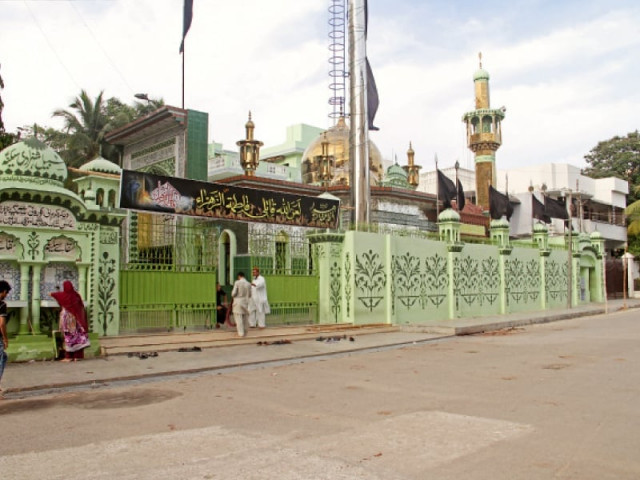Right to the City: Inside Karachi with six local artists as guides
The book, curated by Shahana Rajani, will be launched in Pakistan around mid-August.

Manizhe Ali’s Azakhana-e-Zehra are featured in the book, Right to the City: Travel Guide to Karachi, which was launched in Canada on Friday. PHOTO COURTESY MANIZHE ALI
What Karachi lacks in law and order, it makes up for in its daring residents. Six such Karachi’ites, also artists in their own right, took the outsiders on a walk through the sights and sounds of the city in the book curated by Shahana Rajani.
The book, Right to the City: Travel Guide to Karachi, doesn’t fall in the category of typical guide books which feature sections of what to eat and where to shop. Featuring the works and narratives of Bani Abidi, Manizhe Ali, Sara Khan, Seher Naveed, Shayan Rajani and Roohi Ahmed, the book sheds light on what makes Karachi a thriving yet unstable city - the readers are taken down popular roads, taken on bus rides and also given a glimpse of bomb blasts.
The book is the brainchild of Shahana Rajani, an MA Candidate in the Critical and Curatorial Studies programme at the University of British Columbia. “Shahana’s work has usually revolved around Karachi and, for her thesis, she decided to come out with a tour guide to the city which would deviate from the usual guides and offer a more personal experience,” said artist Seher Naveed, a graduate of Indus Valley School of Art and Architecture (IVSAA), while talking to The Express Tribune. “She had a meeting with a group of artists and found out what each of us could bring to the table. My conversation with her was on a visit to Zainab Market and how the shopkeepers there pointed out that Karachi had lost its share of tourists who used to frequently visit the city before the 1990s.”

Speaking about her nature of work, Naveed said that the project started off as a way to express her love for a city which was dear to her yet unsafe. “My pieces were mirror images of the bomb blast sites. I used Photoshop as a medium and vertically flipped the locations.”
The main idea behind the book is for the artists to show Karachi however they want to, said Naveed. Sara Khan chose to work with a bus route to the market, Bani Abidi focused on different barriers that have been placed permanently at certain points in the city or are put up when political dignitaries visit and Roohi Ahmed has used city mappings to familiarise people with Karachi.
Artist and filmmaker Manizhe Ali, who completed her MA in Visual and Media Anthropology from the Freie Universität, Berlin in 2012, has centered her work around Numaish Chowrangi, which according to Ali, encapsulates the spirit of Karachi. “In Muharram, the Shia community holds their procession at Numaish Chowrangi while the mosque on the main intersection is also always bustling with people. This was also the spot in Karachi where most of the protests against the Hazara killings were held - my pictures and writings aim to narrate the story of how this area transforms,” explained Ali. “My work is from an anthropological perspective and features more text as compared to the other artists.”
Speaking on her experience of working with Shahana, she said that each person had artistic freedom to explore his/ her themes. “This project, which is purely an artistic interpretation, is my second time working with Shahana.”
According to Ali, the book will be launched around mid-August in Pakistan. “Shahana is also planning a city tour with the artists in Karachi, depending on who agrees to the idea. I, for one, would love to be a part of it.”
Published in The Express Tribune, June 21st, 2013.



















COMMENTS
Comments are moderated and generally will be posted if they are on-topic and not abusive.
For more information, please see our Comments FAQ